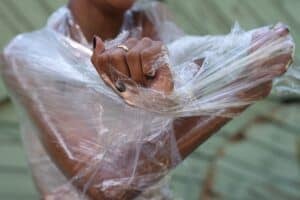After five months of microbial exposure, the plastic pieces were weighed, revealing that the indigenous organisms had succeeded in reducing the weight of the plastic.

Microbes are stepping up to try and undo the damage done to the oceans by humans. Researchers collected weathered plastic from two different beaches in Chania, Greece and have discovered that tiny microbes are beginning to eat the ocean plastic, causing it to break down.
The scientists discovered that after the plastic has spent some time in the sun, becoming more brittle in the process, a series of ocean microbes move in and begin devouring the carbon in the plastic.
“Abiotic degradation precedes and stimulates biodegradation since carbonyl groups are generated on the [plastic] surface,” the researchers, led by environmental engineer Evdokia Syranidou from the Technical University of Crete in Greece, explain in their paper.
“Therefore, a wide range of organisms can settle on the weathered surface, using it as a substrate and as a carbon source.”
The process is however sadly, not a fast one.
In order to test the various microbes the research team washed, then cut up plastic into small pieces, then dunked them in a saline solution which acted as an ocean water proxy. These pieces were then exposed to two different kinds of microbial communities: naturally occurring organisms indigenous to the sea (comprising several different species), and bio-augmented strains tweaked to form stronger biofilms on plastic surfaces.
“After five months of microbial exposure, the plastic pieces were weighed, revealing that the indigenous organisms had succeeded in reducing the weight of weathered PS by up to 11 percent, and weathered PE by up to 7 percent,” the study showed.
The pieces proving most susceptible to be eaten were either Polyethylene, the most popular plastic and the one found in products such as grocery bags and shampoo bottles, or Polystyrene, a hard plastic found in food packaging and electronics.
In the final report in the Journal of Hazardous Materials, the team wrote, “Closing the gap between the hypothetic and realistic employment of microbial networks for plastic degradation could contribute to the development of mitigation measures and sustainable policies.”
For more news your way, download The Citizen’s app for iOS and Android.






